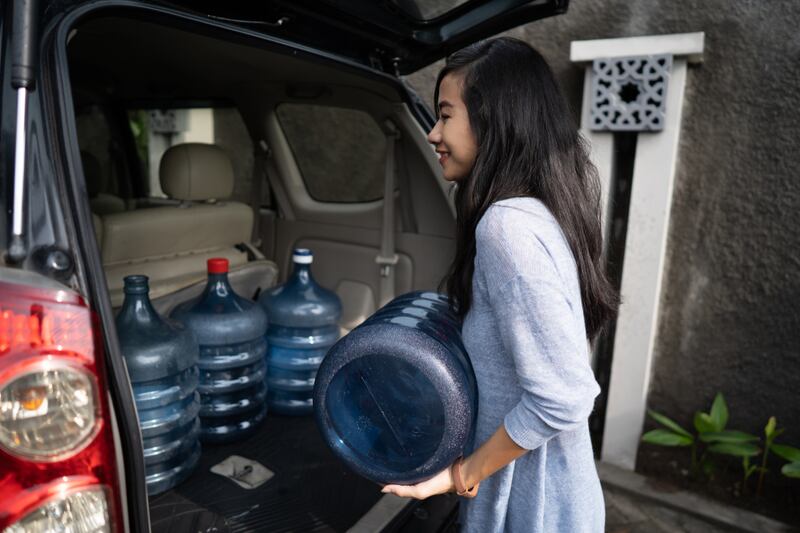The idea of being prepared for a disaster or emergency might sound like something your zealous parents or chatty aunt always preaches about. Where are you supposed to put those emergency food kits, anyway? Unfortunately, their advice isn’t outdated or paranoid.
Utah officials warn residents frequently to keep essentials on hand, because despite best efforts, not everyone can predict when hard times will happen. Even something as simple as a power outage can have lasting effects, especially if the outage isn’t quickly fixable. Utah officials compiled a list of possible disasters that all residents should prepare for.
The good thing is, you still have time to rectify the state of your emergency preparedness. It doesn’t have to happen all at once, either. Make a goal to achieve one more step in this list each month and soon, you’ll be able to rest easy knowing you’ll be able to survive should the worst happen.
Here are five key ways your family should be prepared for any emergency.
Make a plan
The first thing you need is a plan for what to do in an emergency. This plan should be written out, kept in an easily accessible but secure location, and everyone in the family should know what it contains. Military OneSource by the U.S. Department of Defense recommends including:
- Emergency phone numbers (police, fire, school, child care, work, poison control, etc)
- Emergency contact (someone who doesn’t live in your household or neighborhood in case of an emergency that affects the whole community)
- Escape routes for every room in the house
- Emergency meeting spots
- Pet plan
- Important documents
Part of your plan should also include figuring out how much money your family should save to cover three months of expenses and setting a goal to save up enough to cover it.
Gather important documents
Keep your plan and important documents in a fireproof and waterproof evacuation box or just a plastic bag to make it easy to grab. Important documents should include every family member’s social security card or number, a copy of each person’s birth certificate, marriage certificate, driver’s license and passport, property titles for your car and home, bank and credit card account numbers and health insurance and life insurance account information, your will, and any other important files backed up on an external hard drive.
Remember to update your plan and documents periodically to account for additional family members, ages of children, where you live, changes in insurance or medical information and any other special needs or considerations.
Food storage
In the event of a major disaster or problem that leaves you unable to leave home or grocery shelves empty, it’s important to have a good supply of nonperishable food at home that will allow you to get by until food becomes available again.
Start with a disaster supply kit for each person in your family, with at least a three-day supply of food and build up from there. Buy a few extra cans of food at the grocery store each time you go. When possible, look into buying enough food to keep your family fed for at least 14 days, but as long as possible. Food made and packaged for food storage will have a shelf life of as much as 20 years when stored correctly.
The Food Guys offers an online calculator that can estimate how much food your family would need for a year based on your family size and the age of your family members.
Store drinking water
Starting out, storing water can be as easy as grabbing an extra pack of plastic water bottles when you get groceries. Because plastic water bottles are not the most secure of packaging, you’ll want to avoid keeping your water in a location like a shed or garage where it might be exposed to chemicals, fumes, or fluctuating temperatures. Like your food storage, you should also cycle it out periodically.

Storing enough water for a large family for long term use requires a little more planning, however. According to Water Prepared, the bare minimum of water for a single person for one month is 30 gallons (or about a gallon per day). This wouldn’t allow for much beyond basic consumption, however (i.e. no bathing, toilet flushing, etc.). A more comfortable amount for survival would be 90 gallons per person.
For storing large quantities of water, you’ll need a water barrel (or several). Look for barrels that are made from FDA-approved food grade materials, are BPA free and that fit comfortably in your space. Keep your containers off of bare concrete.
Know protective actions
While emergency preparedness often makes people think of traditional food and water storage and disaster supply kits, they might not think of the most basic of emergency preparedness: know how to survive the disaster. Learn and teach others the protective actions which are: evacuation; sheltering; Drop, Cover and Hold On (earthquake); Turn Around, Don’t Drown (floods); When Thunder Roars, Go Indoors (lightning); Get Low and Go (structure fire); Shelter-in-Place (hazmat incidents); Run, Hide, Fight (active threat). Also, remember to check your alarms and detectors twice a year (some people do it when they change their clocks for Daylight Savings) and replace batteries as needed.
Fire extinguishers should be recharged or replaced every 12 years whether it has been used or not. However, you should check your extinguisher’s gauge monthly to make sure it’s properly charged.
There is much more to emergency preparedness than what’s covered here. At this year’s Be Ready Utah Expo, learn about these keys as well as tips for emergency preparedness gardening, Ham radio, active shooter safety, raising backyard chickens, nuclear preparedness, and more. The expo runs March 13-14 at the Mountain America Expo Center in Sandy, Utah.
Learn more about the expo and how to get tickets on their website.

